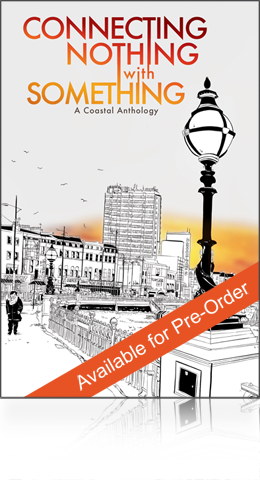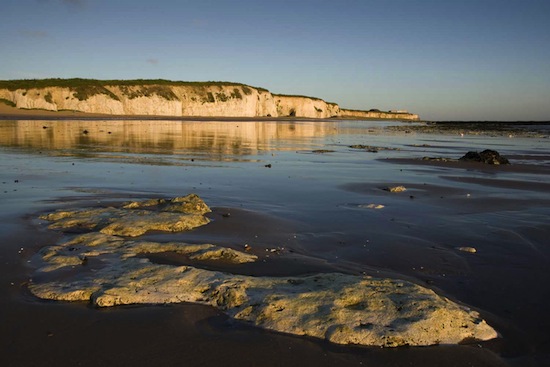In TS Eliot’s The Wasteland, that elegiac landmark of modernism and touchstone of modern English literature, I was surprised to discover a reference to a familiar place. In the poem the reader is treated to the following lines:
On Margate sands
I can connect
Nothing with nothing
The broken fingernails of dirty hands
My people humble people who expect
Nothing.
I was never much a fan of the modernists. People talk about formal innovation, a break from traditional structures of poetry and verse, new takes on the novel and a move away from dowdy realism. All good things. Adhering to Ezra Pound’s maxim ‘make it new’ was a noble imperative and it would be foolish to dismiss some of the power and innovation in these canonised texts. What I always had a problem with was modernism’s tendency toward elitism, some of its writers disdain for the masses and mass culture, and the unquestioned formation of a canon that seemed to define what ‘great’ literature was for the best part of a century.
When beginning the research and thrashing out ideas for the latest book from Influx Press, an anthology of writing from and about the coasts of East Kent and Sussex, there was a hunt for interesting quotes, scraps of literary antecedents that would help shore up the foundations of our book, give it a sense of continuity with Britain’s literary past, just as we’d done with our previous titles. Our first book, Acquired for Development By … had lifted its title from a section in Alexander Baron’s The Lowlife in a conscious effort to make contact with a more proletarian (and, in fact, more widely-read) form of literature that had been running the risk of being forgotten.
Hunting around, there was less relevant coastal literature from Kent and Sussex (discounting Brighton), especially fiction, than I had expected and hoped – but it was there. William Somerset Maugham, orphaned in Whitstable, rendered that town into Blackstable in Of Human Bondage and Cakes and Ale; beginning in 1915, Dr. Syn roamed the Romney Marsh in Russell Thorndike’s series of novels inspired by eighteenth century tales of smuggling about people like the Hawkhurst Gang. Famously, Dickens’ Great Expectations begins out on the Kentish marshes of the Medway, near the ominous prison hulks rusting in the Thames estuary. The Psammead, in the children’s classic Five Children and It, was to be found in a gravel pit in Kent that had once been seashore. Russell Hoban’s Riddley Walker roamed across a far future post-apocalyptic Kent, in towns like Widders Bel, Forked Stone, Cambry. So there were fictions here, though many of them belonging to another era, giving a greater impetus to add something new to these places, something contemporary. Non-fiction is much fuller with titles, of varying quality, about the histories and discoveries on the English coast. Notable recent examples would be Strands: A Year of Discoveries on the Beach by Jean Sprackland (not south-east, but focusing on the coast between Blackpool and Liverpool) and most important to this project, Wish You Were Here: England on Sea by Travis Elborough (who also contributes the foreword to this anthology).
During this research, I was directed by a poet friend to TS Eliot’s The Wasteland, that epic totem of the modernist movement that I’d studied in my university days then largely forgotten about.
The lines about Margate stayed with me, niggled at me. I even got a bit cross. Margate, I know, would not be on many people’s lists of top ten British destinations, had become almost a byword for coastal decay, a Southern mirror to the demise of Blackpool, a bleak metaphor for the country itself. A place confined to the cosy histories of cockney memory, a visit from Ray Winstone in Last Orders, an old Chas and Dave song. By the early noughties it was in a much worse state than the locale that had seemingly inspired Eliot’s despair.
Margate and the rest of the dilapidated Kent and Sussex coast featured heavily in my childhood, a place where we would be taken up the coast from Whitstable to visit the Dreamland amusement park (a name that was asking for trouble), to ride spinning teacups, crunch through pink rock and run over damp sand into the Wantsum Channel. Sandy picnic days in Broadstairs, drives to see the old Viking ship at Pegwell Bay, marvelling at artificial waves at ‘Tides’ in Deal. These unfashionable places that embarrass us, the places so many of us hail from, had to be worth more than nothing. To even hate the place you originate from is to be defined by it in some way.
Call it serendipity, but at about the same time as finding these lines in The Wasteland, I’d visited Margate to see an exhibition titled ‘Nothing in the world but Youth’, (curated by Iain Aitch, fellow punk and skinhead enthusiast who would go onto write ‘You Wantsum?’ for the book). The exhibition was held in the recently arrived Turner Contemporary (it opened its doors in April 2011), an offshoot of the BP sponsored Tate, a clear sign that things were changing – or at least, someone, somewhere, was making a big effort to change the place.
My father works in Margate as a youth worker, and it was he who had lured me out of my Hackney bubble to visit a place I’d hardly set foot in since I was a teenager. If not nothing, then I wasn’t (I’m ashamed to say) expecting much. Happily, ‘Nothing in the world but youth’ was something of a personal revelation. It was a fascinating display of Britain’s youth and sub-cultures from the nineteenth century onwards, and how so many of these groups had been drawn (or pushed) to Margate, to the coast, to the periphery of the country. Teddy boys, mods, rockers, punks, skinheads, ska boys, ravers, all had left their mark here in some form – if you knew where, and how, to look. What had most impressed me was a massive wall-spanning collage of ephemera from the 70s, 80s, 90s, anarcho-punk propaganda by Crass and Conflict, troubling items from the neo-Nazi scenes of the time (Blood and Honour zines, Skrewdriver badges), an Angelic Upstarts poster, fliers for The Raincoats, The Birthday Party, The Pop Group. Political entreaties to free the H-Block prisoners, anti-Thatcher diatribes, Class War! newspapers. All this offset with the pop-fluff and royalist jingoism of the time; Duran Duran, Charles and Diana smiling out of a too-bright Union Jack, old Smash Hits! magazines, a pouting George Michael. The fact I was looking at all of this in Margate of all places, a town that seemed on the cusp of some big shift from dilapidation into art-led regeneration, seemed hugely important. Here was a big part of UK history, effortlessly and intrinsically connected, sub-cultures I loved and hated, memories of my own and the memories I had inherited. It was all there, the dots joined if you cared to see them. The perfect, real-life conflation of everything I found important in fiction – personal biography, the music and political sub-cultures I adored, the geography of younger days, the return journey to a place once known, the murky history of a nation.
It was this experience that started the long process that has led to the publication of Connecting Nothing With Something. It gave a much needed shunt out of London navel gazing (our first book was devoted entirely to our Hackney obsessions) and to start thinking about how to look at these places, so unloved, in a new way; to connect ‘nothing’ with personal memory and the minutiae of everyday experience, with the grand sweep of history, with the psychological effects and brackish ghosts created by seaside living.
This is what fascinates, endlessly, about the coast. The sea, that clichéd British obsession, indifferent and inspiring. I stand on solid ground here and can see the country ends there. It’s an eternal fascination that, happily for us at Influx Press, is a gift to writers, poets and artists. Assembling this book it has been interesting to note the effect this landscape has on the psyche; the pieces all are more measured, thoughtful, introspective, even melancholy, than our book of London writing. The city inspires anger, urgency; the coast reverie and reflection, giving the chance to let the mind breathe looking out to a watery horizon uncluttered by buildings in states of construction or demolition. The sea is a reassuring, impassive, constant.
Now, a strange thing is happening on some parts of the coast. These places so unloved and left to ruin are, slowly and with Arts Council backing, becoming almost fashionable again. Rumours about Margate becoming ‘Hackney-on-Sea’ have surfaced on Twitter. Culture-consumers take the train down to Hastings to visit the Jerwood and marvel at the authenticity of fishing huts. In Whitstable, the town of my childhood, you can barely move at certain weekends for the number of DFLs (‘Down From Londons’) queuing for mackerel buns, sliding oysters down their throats and drinking local ales. Some people have even talked about living there; for all the feelings of isolation and being stuck out on a fringe of the country, by god those old Victorian houses are cheap. You could buy a five bedroom house, with garden, for half the price of a Hackney two-bed upstairs flat. I see the appeal; I am a DFL in so many ways.
I’m not a dour cynic; clearly, being a writer, editor and publisher of prose and poetry means that I do think that the creative arts can have a positive effect on an area; it was an exhibition at the Turner Contemporary itself that set me on the path to realising this project. What interests us here at Influx is that the issues and problems that we documented in our Hackney book are replicating themselves on the coast. Art and farmers markets coming in causing friction with the older locals, notions of Dreamland re-opening as a ‘heritage’ amusement park, ironic trips to the seaside, the eternal quest for an authenticity that cannot be bought. How it will all turn out remains to be seen. We’re not academics, not social historians; we’ve always gleaned a greater understanding of an issue, of a place, from the fictions it throws up and the personal experiences contained within than grand sweeping narratives and academic studies. That’s the way we choose to approach, and hopefully make better sense of such issues.
Connecting Nothing with Something is a book that explores all these issues and many more, taking in a sweep of towns from Whitstable in Kent round to Newhaven in Sussex, with main focus on the aforementioned Margate and Hasting (a place that faces similar issues with the opening of the Jerwood Gallery). A diverse array of writers look at the ghosts of youth-cults, snogging and awkward fumbles under the pier, hidden fascism, French art-troupes, rumours of riots, grizzled Deal fishermen, boozy afternoons and disappearing coastlines. There are no answers contained within the book, only questions, and we’re not trying to present ‘the truth’, only a truth that the reader can agree or disagree with as they see fit. And hopefully, issues aside, the poems and stories hold up in their own right as excellent pieces of writing. I am proud to be publishing work by such a talented and diverse array of writers.
We made a point of making the title refer back to that Eliot poem; nowhere is just ‘nothing’. The day-to-day, even the mundane, can be transformed into something wondrous if you know how to look at it.

Connecting Nothing With Something is published August 15th by Influx Press


